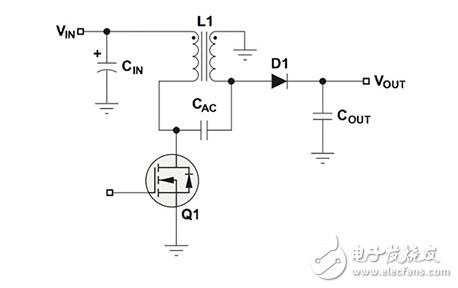
资料下载

耦合和非耦合电感SEPIC比较电压转换器
耦合和非耦合电感SEPIC比较电压转换器
单端初级电感型DC-DC变换器(SEPIC)是一个灵活的拓扑结构,可以作为一个降压(“巴克”)和升压(提高)的电压调节器。该设计是受欢迎的工程师,因为它具有最小的有源元件,一个简单的控制器,和钳位开关波形,提供低噪声操作。
SEPIC是用两个电感的区别。电感器可以保持分开(“耦合”)或缠绕到一个共同的核心(“耦合”)。对于电路的工作方式几乎没有什么区别,设计者往往不确定哪种方法最好,或者两者之间是否存在真正的区别。
本文将仔细看看这两种类型,突出的差异,并解释了各自的优点和缺点。

Add one inductor
Unlike linear voltage regulators, switching DC-DC regulators are able to flip from a buck to boost mode when the battery voltage drops below what is required at the regulator output. The boost configuration is useful because it allows more of the battery’s energy to be accessed.
The SEPIC regulator is based on a standard buck/boost design but with an extra inductor and capacitor. A key advantage of the SEPIC topology is that, unlike the conventional buck/boost regulator, it does not invert the output voltage compared to the input.
声明:本文内容及配图由入驻作者撰写或者入驻合作网站授权转载。文章观点仅代表作者本人,不代表电子发烧友网立场。文章及其配图仅供工程师学习之用,如有内容侵权或者其他违规问题,请联系本站处理。 举报投诉
- 相关下载
- 相关文章






